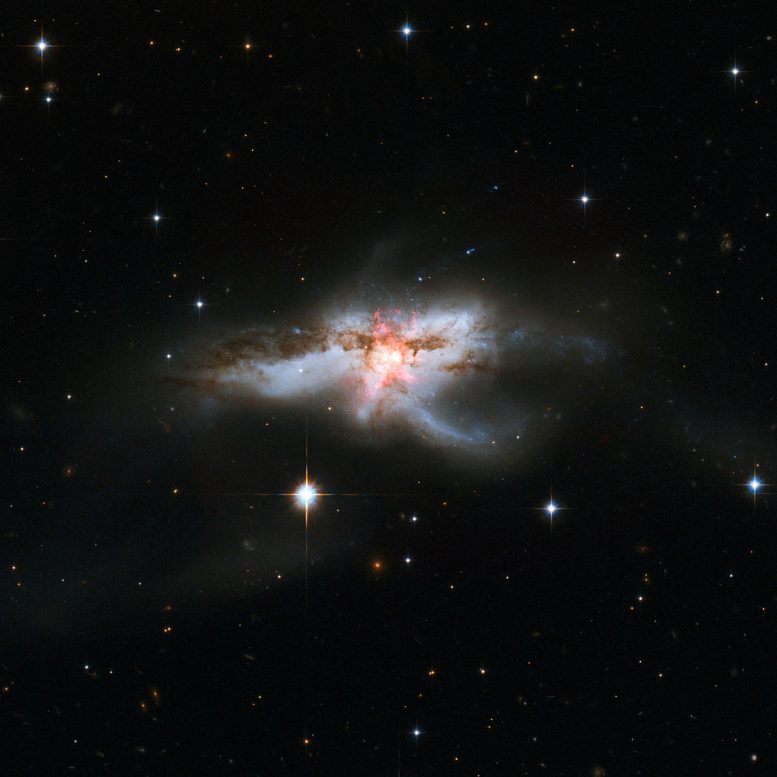CfA astronomer Junko Ueda is a member of a team of fifteen astronomers who used the ALMA submillimeter telescope facility, with its superb spatial imaging capabilities, to study the outflow in the luminous galaxy NGC 6240, known to be a luminous merger in its late stages. Its double nuclei, separated by a modest two thousand light-years, has already been seen at wavelengths from the X-ray to the radio. The astronomers used one of the spectral lines from the abundant molecule carbon monoxide to probe the inner region of the galaxy. The line also revealed the presence of gas motions of up to two thousand kilometers per second, consistent with a powerful wind driving a massive flow of material out of the galaxy. The new images were able to identify for the first time several regions of outflow activity located only a few thousand light-years from the black holes and aligned as though they were driven by processes associated with the nuclear black holes. Moreover, these regions are spatially coincident with other indicators of general activity like shocked gas and X-rays. The new results are one of the first demonstrations that the widely seen molecular outflow activity does originate from black hole feedback mechanisms. Reference: “Imaging the Molecular Outflows of the Prototypical ULIRG NGC 6240 with ALMA” by T Saito, D Iono, J Ueda, D Espada, K Sliwa, K Nakanishi, N Lu, C K Xu, T Michiyama, H Kaneko, T Yamashita, M Ando, M S Yun, K Motohara and R Kawabe, 27 December 2017, MNRAS.DOI: 10.1093/mnrasl/slx207
